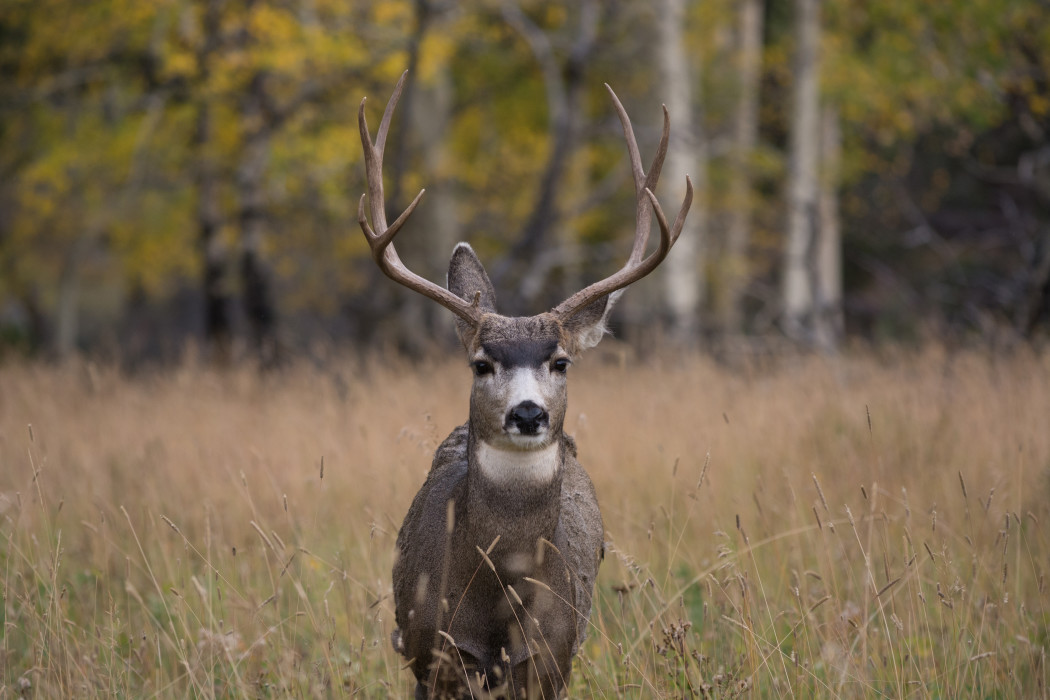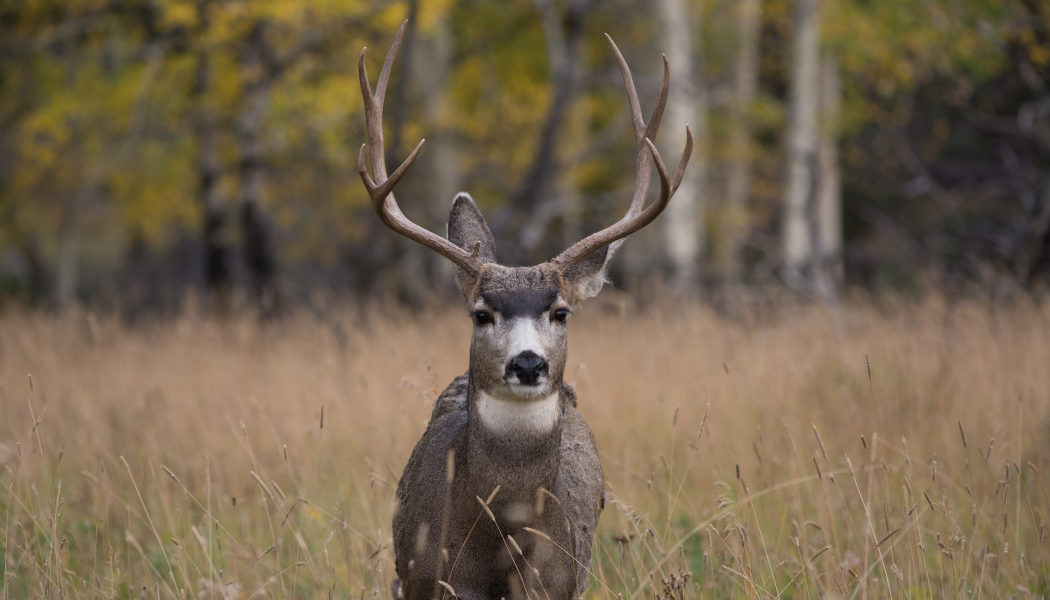
By Billy Arnold
Jackson Hole News&Guide
Via- Wyoming News Exchange
JACKSON — Concerned about habitat and declining populations in the face of severe drought and disease, Wyoming wildlife managers are axing 8,000 tags for hunting pronghorn and 3,300 tags for hunting mule deer statewide.
Pronghorn and mule deer herds in the Jackson area are doing relatively well compared to the rest of the state, wildlife managers said. But the picture elsewhere in Wyoming isn’t so rosy.
“And I thought chronic wasting disease was a bleak report,” Game and Fish Commission President Kenneth Roberts said at the board’s April 19 season-setting meeting, reflecting on a report about climate and drought and their effect on wildlife habitat statewide.
Game and Fish Terrestrial Habitat Supervisor Ian Tator gave the report, focusing in large part on the current drought, which he said is the worst in “both coverage and intensity” since one roughly 10 years back.
As it stands, roughly 63% of the state is in severe drought, with extreme drought in most of Teton and Park counties and northcentral areas east of the Bighorn Mountains. In the Snake River Basin, snow water equivalents are at 85% of what’s typical for this time of year, while central areas of the state are at or above 90%; the Cheyenne River Basin in the far east is hovering around 68% of median.
“That lack of soil moisture is going to limit our future shrub growth, which is a critical component of big game winter diet,” Tator told commissioners. “If things don’t get better now, next winter we’re not going to have the shrub growth necessary to sustain those populations the way we want to.”
Drought, Tator said, generally causes a reduction in habitat, limiting plant growth to wet areas around rivers and lakes and hindering the growth of plants that wildlife depend on in winter.
That reduction in habitat takes a toll on ungulates like pronghorn and mule deer, which are struggling, said Doug Brimeyer, Game and Fish’s deputy chief of wildlife. Unlike elk, which have a broader mouth and are able to consume a wider array of forage, pronghorn and antelope are more selective browsers and eat fewer kinds of plants, making them more susceptible to degraded habitat conditions.
Habitat pressures coupled with spring storms and outbreaks of mycoplasma bovis, a relatively new bacterial disease for Wyoming pronghorn, as well as epizootic hemorrhagic disease, a virus that crops up in white-tailed deer and pronghorn during fall drought conditions, have driven pronghorn numbers down, Brimeyer said.
Mule deer have faced similar habitat pressures, as well as EHD outbreaks in the last year.
Drought is a complicating factor that affects both habitat and disease, Brimeyer said. Dry weather elevates the risk of EHD because it produces conditions more favorable for the disease-transmitting gnat.
Models estimated the post-hunt population for pronghorn at 363,200 in 2021, roughly 84% of the state’s population objective. The estimate for mule deer numbers was 291,700, roughly 61% of the statewide goal.
Elk, by contrast, are thriving.
“Our elk populations are doing extremely well across the state,” Brimeyer said.
A count of 21 herds came in at 74,900 animals in 2021, roughly 20% above the population goal.
In the Jackson area, pronghorn populations are stable, but Brimeyer said they’re not doing “really well.”
“They’re the only place in the state where numbers held a little bit static and we saw a few places where we wanted to bump numbers up,” Brimeyer said of the Jackson and Pinedale area antelope herds.
Game and Fish commissioners approved an additional 50 doe and fawn pronghorn licenses in those areas.
Trends for mule deer populations in the Jackson area are falling, Brimeyer said. But he added that there are reasons for optimism: Elevated fawn-to-doe ratios compared to previous years, less mortality over the last winter due to relatively mild conditions and strong buck-to-doe ratios.
There were no changes to mule deer tag allocations in the Jackson area.
At the season-setting meeting in Lander last week, state wildlife commissioners encountered little controversy over plans for pronghorn management.
But hunters did inveigh against some of the state’s plans for managing mule deer near Laramie and Greybull.
While population numbers are down, levels of chronic wasting disease in both areas led Game and Fish to propose new, relatively limited November buck hunts in those areas, hoping to slow the spread of the disease.
“Areas that have later buck hunts actually have a lower level of prevalence,” Brimeyer said. “If you can implement some buck hunts before the prevalence gets extremely high, you can influence the prevalence.”
But the department walked the Laramie proposals back — while allowing the hunts near Greybull to go forward — after receiving a deluge of public comment from hunters like Zach Key, of the Muley Fanatic Foundation.
“We backed away from that because we wanted to do a little bit more public outreach and get our public to understand the importance of why we were proposing this,” Brimeyer told commissioners.
Key took issue with the new hunts, worried that killing more bucks on winter ranges might not achieve the state’s aim of reducing chronic wasting disease, particularly given the longevity of prions that cause the malady. Game and Fish officials said during the season-setting meetings that prions, which are abnormally folded proteins that cause CWD, can last in the soil for up to 16 years. They’re hard to destroy.
That longevity is what makes Key question the effectiveness of targeting bucks to keep the disease in check.
“You killed a bunch of healthy deer that didn’t have it, to kill a few that did have it,” Key told the News&Guide, describing his concern with the proposals. “But how do you ever get in front of the prion?”
Brimeyer said similar buck hunts had been used in Wisconsin and Colorado and have been successful in areas where there’s relatively little chronic wasting disease.
The Sublette and Wyoming Range mule deer herds that dwell in western Wyoming have reported incidences of less than 5%. Prevalence in the Sheep Mountain and Laramie Mountain herds hovers between 10% and 25%.
Key worried that wildlife managers might propose similar hunts in the western parts of the state.
But Brimeyer said, “We’re a long way from that.”
The state wildlife official said managers would return to the Laramie-area hunts next year, possibly with a study to figure out how well a fall buck hunt would work to combat chronic wasting disease.
“The only way we know if it’s going to work is to go out and design a monitoring protocol in one area and compare it to an area where we don’t implement something like that,” Brimeyer said.





